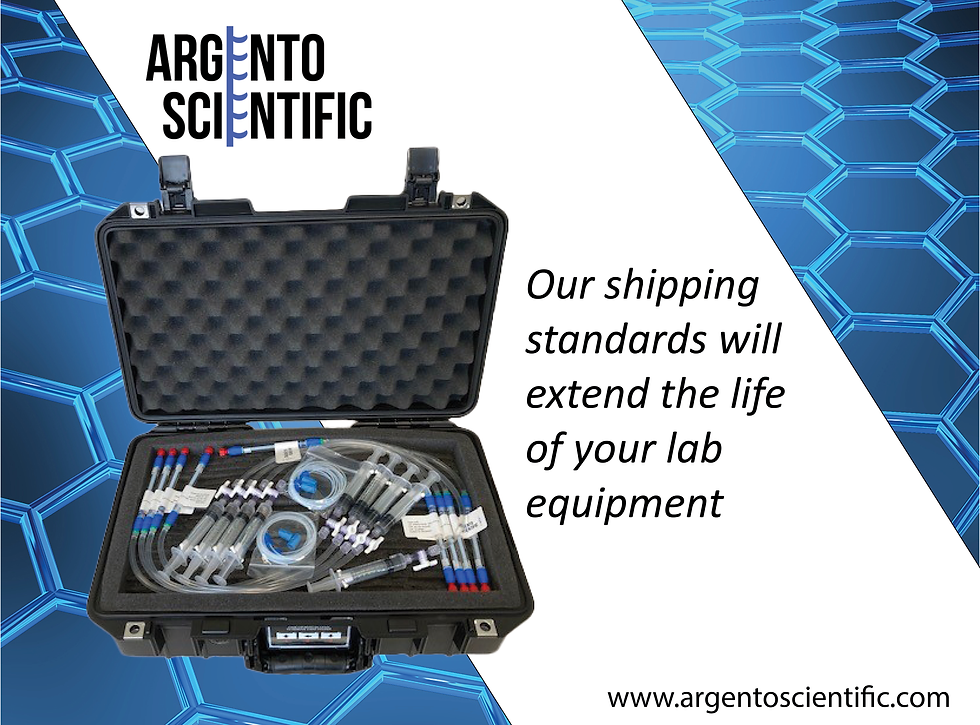Breathing Fumes? Worried About Fines?
- beths731
- Jun 1, 2023
- 4 min read
Updated: Mar 2, 2024

Capturing and Monitoring Waste HPLC and FPLC Solvents
If your lab uses chromatography for separating samples then you're probably generating volatile and/or corrosive waste solvents. These solvents include nitriles, alcohols, acids, bases, and other chemicals used to dissolve the mobile phase. Solvents do their work in the chromatography system and then they often flow into a waste container under the lab bench where they wait to be collected and disposed. While the waste solvents sit in the waste container they continue to be volatile, toxic, corrosive, flammable and regulated. These aren't appealing attributes for chemicals that sit next to you every day while you work. The good news is there are ways to safely collect these chemicals and avoid fines from regulatory authorities. How can waste solvents get out of their containers and cause trouble in the lab? What are the options to prevent this from happening?

Non-secure Waste Lines
If you walk through labs, it's common to see a jumble of different-sized waste lines exiting HPLC systems and lying in the open mouths of waste containers. People move around this equipment throughout the day, and an accidental bump or tug on the tubes can jiggle them out of the waste container. If this happens the tubes drip slippery fluids on the floor creating a fall hazard. The chemicals can corrode the floor and things on the floor like tables, chairs, or equipment. Meanwhile toxic fumes drift up into the air. Even if the tubes stay in the mouth of the open container, they can pump fumes into the air you're breathing. None of this is how waste solvent capture is supposed to work.
OSHA and the EPA require that waste solvents are kept in a "closed container":
To comply with the regulations, and to create a safe working environment, each tube draining waste from the HPLC system must securely attach not the waste container. This might sound simple but it isn't. There are multiple HPLC systems in a typical lab and each system has different kids of tubes draining waste. How do you connect all of these tubes without leaks? Also, the waste containers used in labs can be different. Each container requires the right screw-on cap, and each cap requires the right tubing connections. Here are some things that help with all of this plumbing:
Manifold Caps - The caps that screw onto waste containers have free-spinning manifolds. Free-spinning means that when you unscrew the cap the tubes attached to it don't twist.
Ports - The central manifold in the cap has ports that accept different kinds of tubes. Also, the manifold caps come with extra connectors.
Waste Containers - Different labs have waste containers with different openings. Manifold caps are available to attach to all of them.

Escaping Fumes (VOCs)
Whether or not tubes are properly connected to the container, air must escape from the container as it fills up. The air in the waste container is mixed with fumes from the solvents, so if it's escaping into the lab environment there needs to be a way to clean that air. That's why solvent safety kits come with a manifold, carbon exhaust filter, and assorted fittings. Carbon filters are plastic tubes filled with powder activated carbon and they screw in to one of the ports on the manifold. The other ports on the manifold are all either occupied or plugged, so the only way for air to escape the container is for it to pass through the filter. This is important to keep in mind since a single open port lets the air bypass the filter and escape into the room.
Carbon filters contain powder activated carbon. The properties of this material allow it to adsorb a wide range of chemicals and hold on to them. This means that carbon filters fill up or saturate over time. In fact, if you unscrew the filter after several months of use, it feels noticeably heavier than new filters. How do you know when to change the filter? Carbon filters come with built-in color indicators that turn red when the filter needs to be replaced.

Overflows
Even if all the waste tubes are securely connected to the a screwed-down manifold cap, and the escaping fumes all pass through a carbon exhaust filter, it's still possible for the container to fill up and overflow.
Overflows cause all the problems mentioned earlier - slippery floors, fumes, corrosion and often paperwork. Overflows can even create a fire or explosion hazard. They are to be avoided! The difficulty is that it's hard to monitor multiple HPLC systems chugging along throughout the day. It's not always obvious which systems are running or to see which containers are filling up. Containers are often hidden under the lab bench and even if the containers are visible, it's hard to see the liquid level. Sometimes it helps to give the container a bump to see the liquid inside move, but that's only if you remember to check each container in the first place. An alarm system can help. The Solvent Sentry™ Level Sensor is float sensor attached to the manifold cap. The sensor chirps and lights up when the container starts to fill. The sensor also sends a radio signal to a central bridge that acts as a centralized alarm. It's easy to pair multiple sensors and bridges to one another for a networked alert system.

To sum up, there's a lot going on in the average lab. There's a lot to monitor before it's even possible to focus on the real science that justifies the whole operation in the first place. The tools discussed here make lab work safer and also a bit less distracting. Safety and the efficient use of time both hep to save money and they make work more satisfying.





Comments